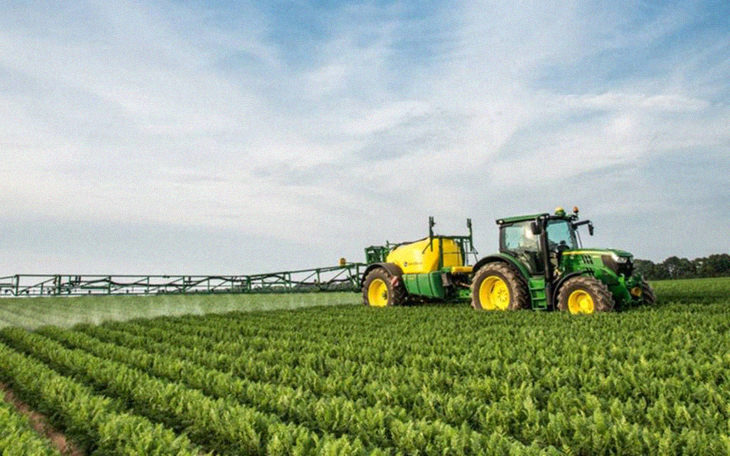
The link between human waste, sanitation technology and sustainable agriculture is becoming more and more plausible for use in the near future. New research shows that some countries are actually moving closer to the possibility of using human waste as a fertilizer, which will create more circular, sustainable economies.
This study, which is directed by civil and environmental engineering professor, Jeremy Guest, of the University of Illinois Urbana-Champaign, describes ‘the spatial distribution of human urine-derived nutrients – nitrogen, phosphorus and potassium – the agricultural fertilizer demand to define supply-demand location typologies, their prevalence across the globe, and the implication for resource recovery.’
According to Prof. Guest, “The total amount of nitrogen, phosphorus, and potassium largely remains constant in our bodies, once we stop growing. Whatever comes in through food and drink must come out in our urine, feces and sweat. Knowing that, we can estimate how much of each of these nutrients is in a population’s bodily waste if we know their diet.”
Guest has done other studies that have looked at the potential of getting the nutrients from human waste from different countries around the world, while also identifying locations that have a surplus of human waste-derived nutrients that are the same as the local demand for agricultural fertilizers.
Prof. Guest explained, “The new study is the first to describe human waste-derived nutrient supply-demand location relationships using a single mathematical equation. The quality of sanitation infrastructure varies greatly across the globe, as do people’s diets and the availability of land suitable for agriculture. Having the means to characterize and quantitatively compare a location’s nutrient-recovery potential can go a long way to better inform decision-makers when it comes to future sanitation and agriculture policy.”
The research team did a comprehensive numerical and geographic analyses of the population, sanitation, dietary and agricultural data for 107 different countries to figure out the quantitative characterization on a global scale. What they found was three different supply-demand typologies, which are the following: ‘countries with a co-located supply-demand; countries with a dislocated supply-demand; and countries with diverse supply-demand proximities.’
For countries such as Australia and the United States, they were placed under the dislocated supply-demand typology. Because of their accelerated agriculture in areas that are far away from the bigger cities, Prof. Guest said that the supply of human waste-derived is too far away from where it is actually needed.
One major issues is that despite progressive sanitation infrastructure at work, it would still mean that the nutrients would require being carried far distances, as either heavy fluids or converted into crystalline products.
Guest also explained that, economically speaking, it makes more sense to make a product that’s concentrated in order to implement a human waste-derived fertilizer for such countries.
In addition, the team also reports that for those countries that have co-located supply-demand typologies such as Nigeria, Uganda, and India, where the human populations are substantially nearer to the agricultural areas, this is what makes local reuse possible as well.
Yet, when it comes to communities that have co-located supply-demand, there is still a need for them to improve their sanitation infrastructure. Prof. Guest further explained that by implementing a human waste-derived fertilizer program, it could be incredibly favorable to both agriculture and sanitation in these particular places.
Such countries such as China, Mexico, Russia and Brazil show a ‘continuum of co-location to dislocation of nutrient supply and demand.’
The study also explains that such country policymakers would also have to approach this type of human water-derived nutrient use with much more regionalized approaches and blueprints, and a variety of local reuse, as well as transportation strategies.
Prof. Guest said, “Higher income countries in this group may have the infrastructure and economic support for various technologies, but those with limited financial resources would require prioritization of resource-recovery technology in some areas.”
The team was also shocked to discover that typologies coincided closely to the United Nations Human Development Index.
According to Guest, “Higher HDI-scoring countries like the U.S., Western Europe, and Australia tend to fall in the dislocated supply-demand typology and lower HDI-scoring countries tend to fit the co-located supply-demand typology. Of course, there are exceptions, but we did not expect to find such a strong correlation.”
The study findings can be found published in the journal Environmental Science and Technology.
Prof. Guest also shared that what the team hopes to achieve through this research is to help figure out which are the notable economic, agricultural, and sanitation characteristics of countries around the globe so that the decision-makers can give priority to such policies, investments, and technologies that can help encourage and promote the goals for a circular economy and to find ways to provide proper sanitation for all.
What are your thoughts? Please comment below and share this news!
True Activist / Report a typo


